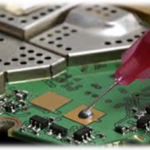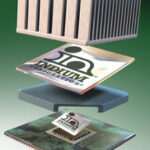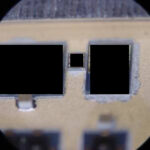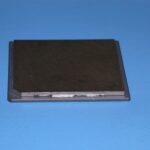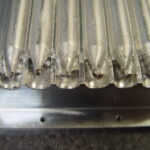Thermal interface materials are materials used in creating heat conductive paths at interfaces between components and thus reduce thermal interface resistance. These materials permit more effective heat flow between separate components where heat is being generated to a heat dissipation components such as solid state transistors to heat sink or a high frequency device connected to a heat spreader. Thermal interface materials’ purpose is to fill the air gap that occurs at contact interfaces with more thermally conductive compounds to permit more effective heat flow than poorly conductive air.
There is a wide variety of thermal interface materials (TIM’s); thermal greases, phase change polymers, thermal tapes, gap filling pads, filled epoxies and solders. All having various costs, performance and manufacturing challenges.
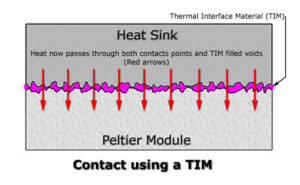
Thermal greases are viscous fluid substance which increase the thermal conductivity of a thermal interface “gap by filling microscopic air-gaps present due to the imperfectly flat and smooth surfaces of the components as seen in Figure 1.

One should note that thermal grease and other polymeric TIM’s do not form a structural bond with their components. Thus, most times thermal greases / thermal phase change pads are used in combination with mechanical fastening (screws or clips) to aid a component’s thermal dissipation to a heat sink. Advantages of thermal greases, phase change polymers, thermal pads, etc. is they are 1) easy to install, 2) install without additional heating, 3) not electrically conductive 4) since they provide very limited attachment (bonding) when connecting two component with large thermal expansion mismatches, the strain differences across the thermal interface does not manifest thermal stressed that can crack or significantly deform the bonded assembly, so when bonding large CTE mismatched materials, thermal grease or other polymeric (non-epoxy) TIM.
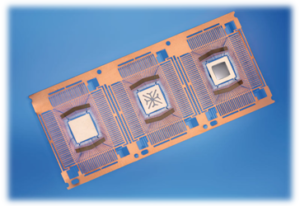
Epoxy bonds and solder bonds on the other hand are TIM’s that make excellent mechanical connections. Figures 3-5 show epoxy bonded electronic sealed packages and heat sinks. Epoxy bonds quite well to a variety of metals, ceramics and polymers and makes a versatile low cost TIM. In fact to improve heat transfer, manufacturers add metal powders such as silver or aluminum to make a composite metal:epoxy bond that has increased thermal conductivity. Their ease of use make the filled epoxies compatible in high volume manufacturing environments but their increased cost with the addition of the fillers can make their use prohibitive in some applications.
Solder thermal interface materials with their 10 – 50x higher thermal conductivities over thermal greases and metal filled epoxies have much higher heat dissipation efficiencies and can are best for high power devices with power densities in excess of 1000 watts. Solder TIM’s are mechanically stable and avoid failures common with lower viscosity fluidic solutions such as greases. Solders are used in a wide variety of devices that rely on the mechanical attachment and the very high thermal conductivities. Applications include:
- Telecom Semiconductors
- Medical Automotive power conversion
- Computing Cryogenics
- LEDs Power Devices
Metallic solders have excellent properties and operate in very harsh environments and generally solve the highest heat flux problems in electronics Figure 6 illustrates the use of an Indium (In) solder pad for soldering an electronic package lid to an extruded aluminum heat sink. Figure 7 shows an Au-Sn eutectic solder attached set of dies soldered to a heat spreading PCB.
Figures 8 – 9 illustrate examples of active solder bonding using S-Bond solders for bonding electronic to heat spreaders. In this case, such active solders are used to bond a wide variety of dissimilar materials bonding with the use of plating or chemical fluxes. Figure 8 is an S-Bond attached Si die to a Cu-W electronic package lid used to cool the die in operations. Figure 9 is a copper heat pipe S-Bond joined to an aluminum heat spreaders used in actively cooling high power avionics.
For more information on the use of active solders for use in thermal management and so see how S-Bond solders can be used in your applications, Contact Us.

